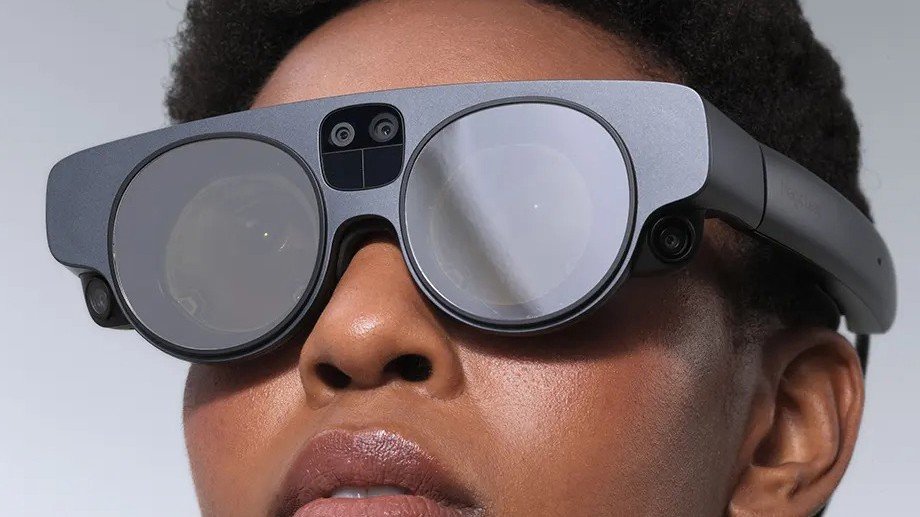Magic Leap 2: “The most immersive AR headset for enterprise”
After a tumultuous few years, Magic Leap is back on its feet after raising $500 million in funding for its new enterprise-focused headset, Magic Leap 2 (ML2).
Magic Leap’s new AR headset is described as being the industry’s smallest and lightest device built for enterprise, designed to increase business adoption of AR.
The ML2 blends AR and VR using a feature called ‘global dimming or dynamic dimming’ to transition between the classic AR experience we are used to, to obscure real-world objects, and leave behind the virtual images.
Magic Leap’s VP of Optical Engineering Kevin Curtis explained to Upload VR that “dynamic dimming can vary the lens from letting through 22% of real-world light to letting through just 0.3%. At 22% the real world will be visible even in dark rooms, 0.3% would let virtual objects remain visible even in bright outdoor conditions.”
This is just one of the new and improved features of this second-generation headset. Here’s everything else we know about it so far.
Aesthetics
The new headset is a sleeker, more compact design than the original, with less ‘Willy Wonka’ style lenses and a more wearable look. The computing puck is also smaller, despite it being more than twice as powerful with improved memory and storage, which will make wearing it more comfortable.
Left: Magic Leap 1. Right: Magic Leap 2. Credit: Magic Leap
Field of view
Perhaps the most important upgrade to the ML2 is the increased field of view (FOV). One of the main critiques of the original ML1 model was the small FOV that meant users had to move around to see the full AR models, which could spoil the immersion. The ML2 offers a FOV of 65 degrees compared to the 50 degrees of its predecessor. This is much less of a FOV than a standard VR headset (usually 110 degrees) but is a noticeable improvement on the ML1 which often felt like you were looking through an invisible window.
Credit: Magic Leap
Weight
The ML2 weighs 69g less than the original model, coming in at a mere 248 grams compared to the ML1’s 317g. This makes the ML2 less than half the weight of the Microsoft Hololens 2 (which weighs 566g). With increased user comfort, Magic Leap’s vision of enterprise users wearing the headset “all day, every day” becomes more realistic.
Tracking
The ML1 used electromagnetic fields in the headset to track the controller, which encountered problems around some industrial equipment. With the new direction being enterprise-focused, this was not an issue the company could afford to come up against, so Magic Leap has made the switch to optical tracking for the ML2 that uses sensors and cameras in the controller itself. The controller remains to be a simple device for point-and-click interfaces, so no hand tracking or augmented reality hands just yet.
Credit: Magic Leap
The Magic Leap 2 is set for release in the third quarter of 2022 and is expected to cost slightly more than the initial model which was priced at $2,295.




